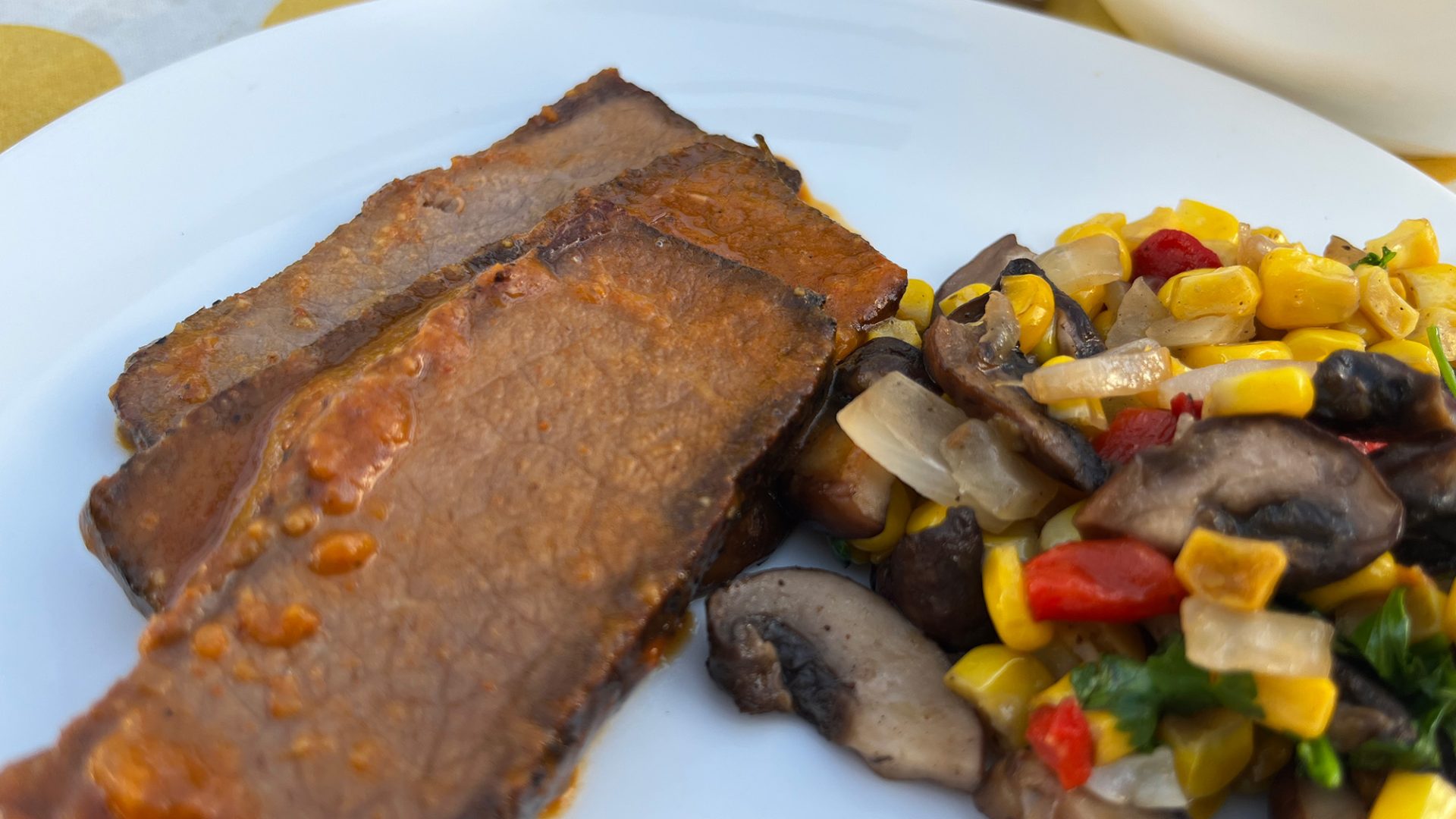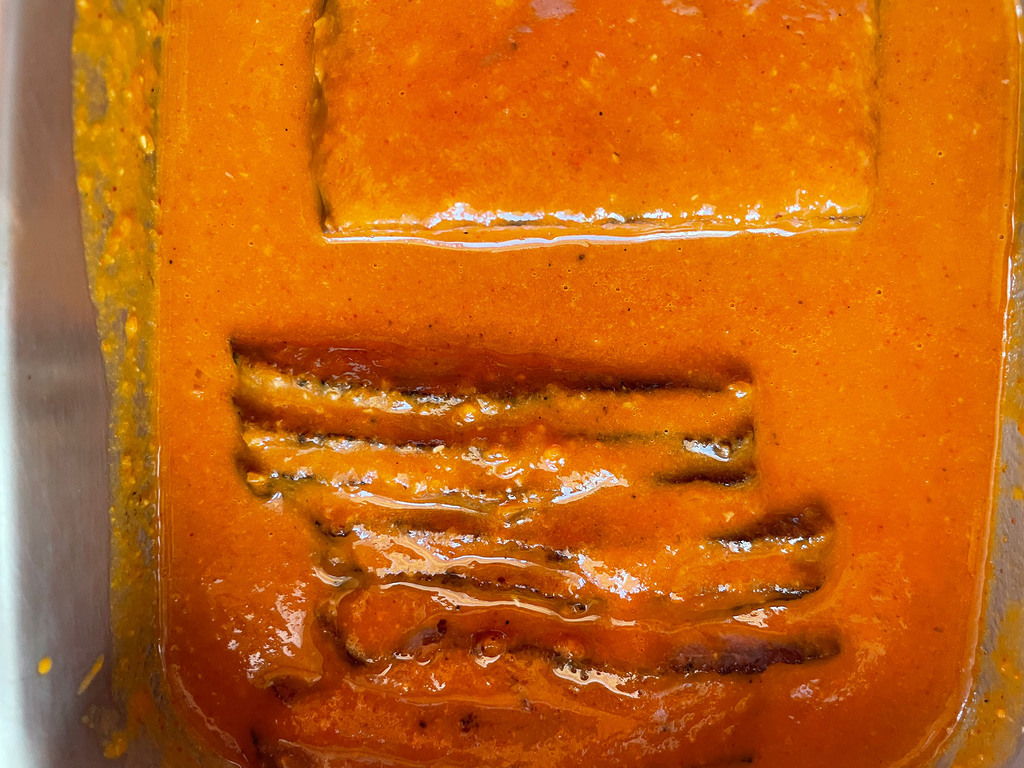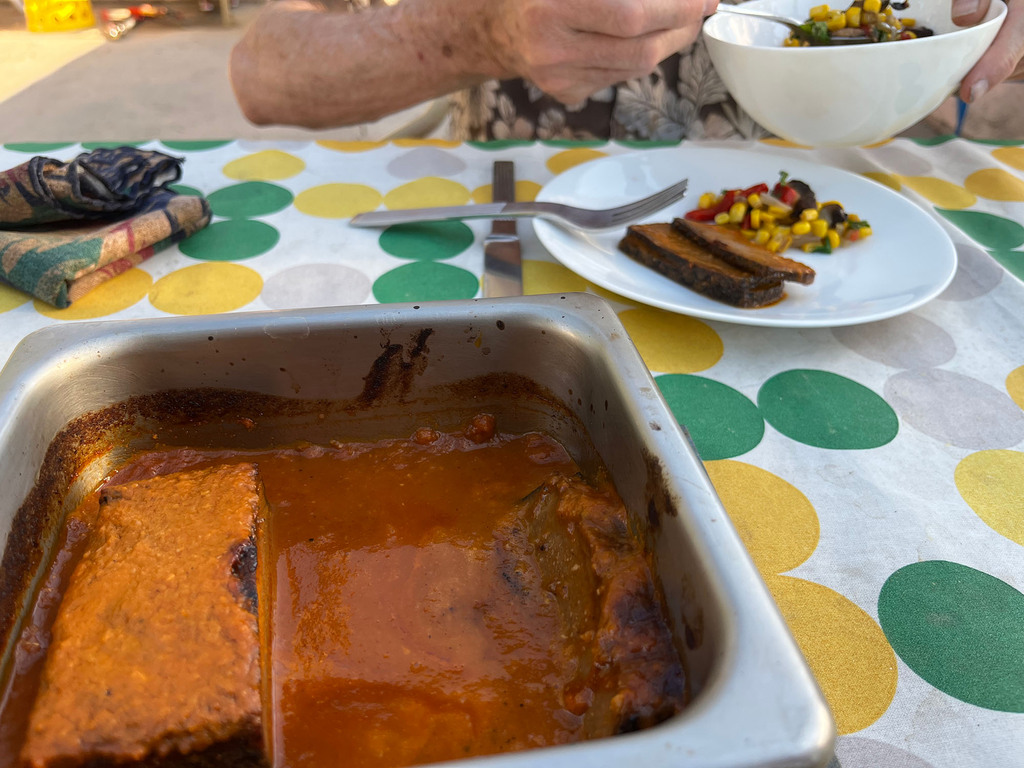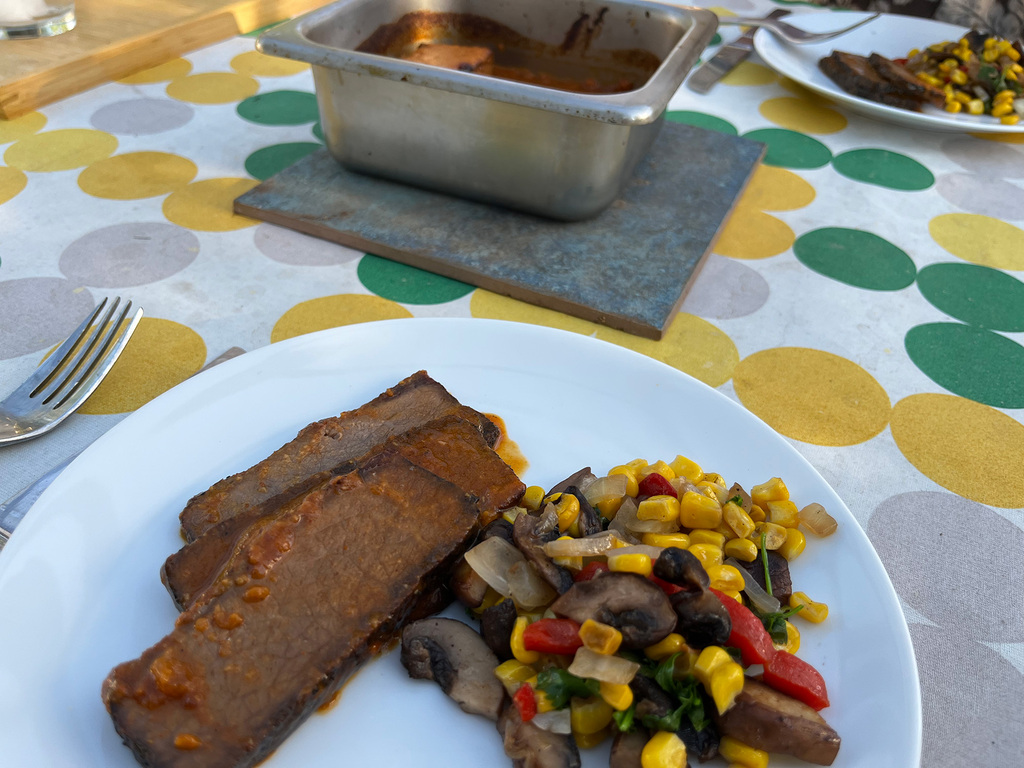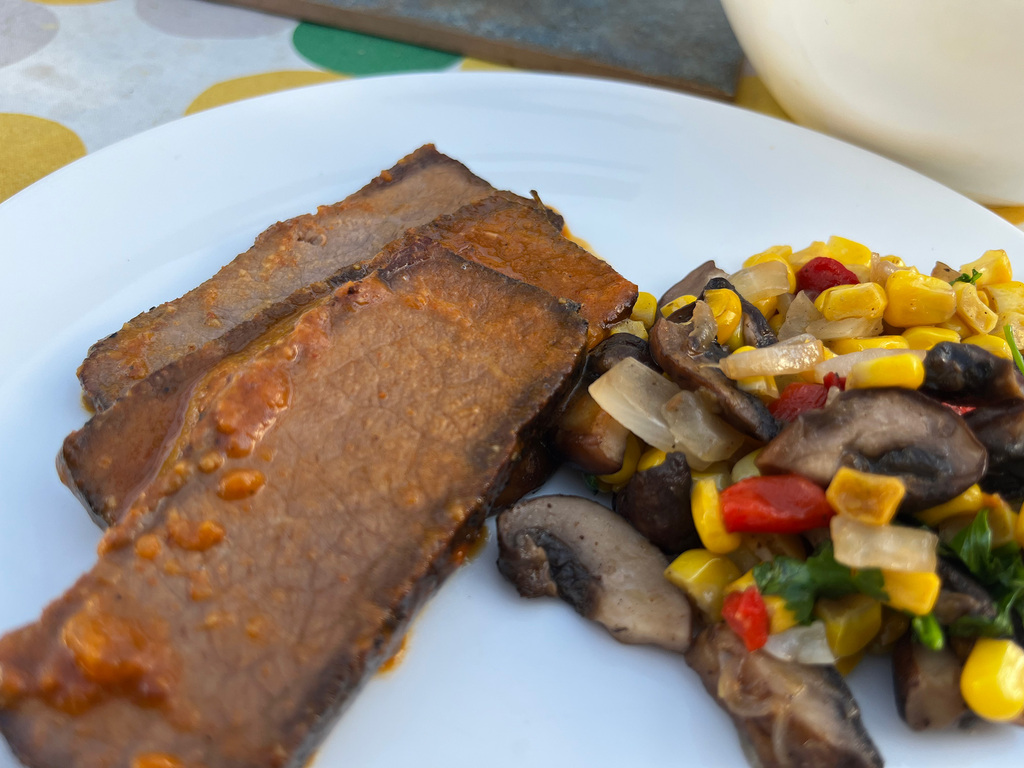Roasting Low and Slow:
The key to a fall-apart brisket beef roast is to cook it at a low temperature so that it cooks slowly. This small, 2-pound roast was smoked and cooked on the barbecue, not in an oven, and not with the use of a smoker, so maintaining the temperature was critical, and by eye. We kept the lid closed and could monitor the outside gauge, and keep the barbecue’s overall temperature under 300°F. Total cooking time was greater than 5 hours . The roast was tested after 4 hours for doneness. At this time, it was only 165, so the overall temperature was allowed to rise to 350 or so. When the internal temperature of the meat exceeded 200°F, we took it from the barbecue and let it cool. After wrapping, the brisket was stored in the refrigerator until ready to serve.
The smoking was achieved by adding soaked wood from our apple tree in a pan on a different part of the barbecue. The wood was added as the barbecue was lit, and on high. After 15 minutes, we had the temperature stabilized just under 300°F.
Brisket warmed two ways:
A half hour before serving time, we reheated the roast in a home-made barbecue sauce. A bit was cut in slices and the rest heated as the whole roast. We use restaurant supply pans on the bbq. They are inexpensive if they get too dirty to clean. At the ABQ restaurant supply, lids for each size are available.
The unsliced brisket was slightly more moist, but both felt apart when nudged with a fork and were very tender.
